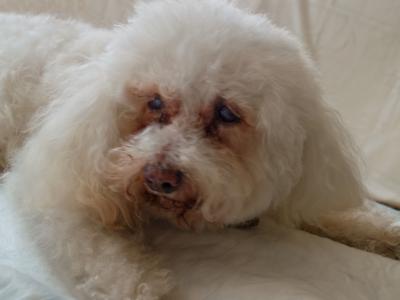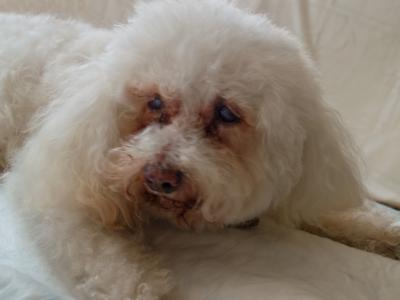When Oscar was diagnosed with a very aggresive form of cancer called anal sac adenocarcinoma, his days seemed numbered – literally. Doctors gave him very little to no chance of living 100 days when they noticed he was unresponsive to chemotherapy and radiation. But things took an unexpected turn, and in two weeks, Oscar was healthy and on his feet again.

His extraordinary recovery made scientists at the 237th National Meeting of the American Chemical Society call him the ‘Miracle dog’. Which is quite true, as he is a Bichon Frise that with the help of a new promising drug managed to keep his tail up and be victorious in the battle with cancer. The drug is called nitrosylcobalamin (NO-Cbl) and it helped three other dogs in a similar situation with Oscar without showing signs of negative side effects, and the way it works is at an elementary level pretty simple: it infiltrates cancer cells the trojan horse way.
This biological trojan horse doesn’t only mean good news for dog owners, but for other people too, as researchers are working to modify the drug so that it can work on humans the same way it does on dogs. That probably won’t happen tomorrow, but it definitely shows promise and gives hope in the long run; however, if we’re talking now, it’s good news for dogs.
“We are one of the few research groups that is offering to treat dogs with cancer that otherwise have no hope,” Joseph A. Bauer, Ph.D, said. “With no other options available, most people in this situation opt to euthanize so that their pets don’t go through the pain of disease and trauma of surgery.”
This is a win-win situation, and with millions and millions of dogs getting cancer each year, scientists now have the chance to study cancer in animals other than lab mice and develop further treatments. As Bauer puts it:
“The beauty of using a dog or a cat to test a cancer drug is two-fold. First, the animal can get the benefit of the most up-to-date drug in cancer medicine. Second, the NCI gets data on pets that are exposed to the same environmental factors their owners are. They breathe the same polluted air and drink the same polluted water that you and I do every day. If you can find an agent to treat cancer that occurs in a dog with success, there is a higher likelihood that you can take that to the human population and have a much higher response rate than with mice.”
Despite the fact that it hasn’t been used effectively on more than four dogs, NO-Cbl shows a lot of promise, because the cases varied drastically, all of them showed major improvements and none had any side effect. This “biological Trojan horse technology” have receptors for vitamin B12 on their outer surface, but it’s just recently that scientists managed to find out how to take advantage of this technology that has been studied for more than 50 years, but with little results.
“This is one of the most rewarding things I’ve ever done in my life,” says Bauer, the owner of a two-year old Beagle. “It gets boring working in the lab, but to see the fruits of your labor in a positive outcome like this and to know you’re responsible in some small way, that’s pretty cool.”









